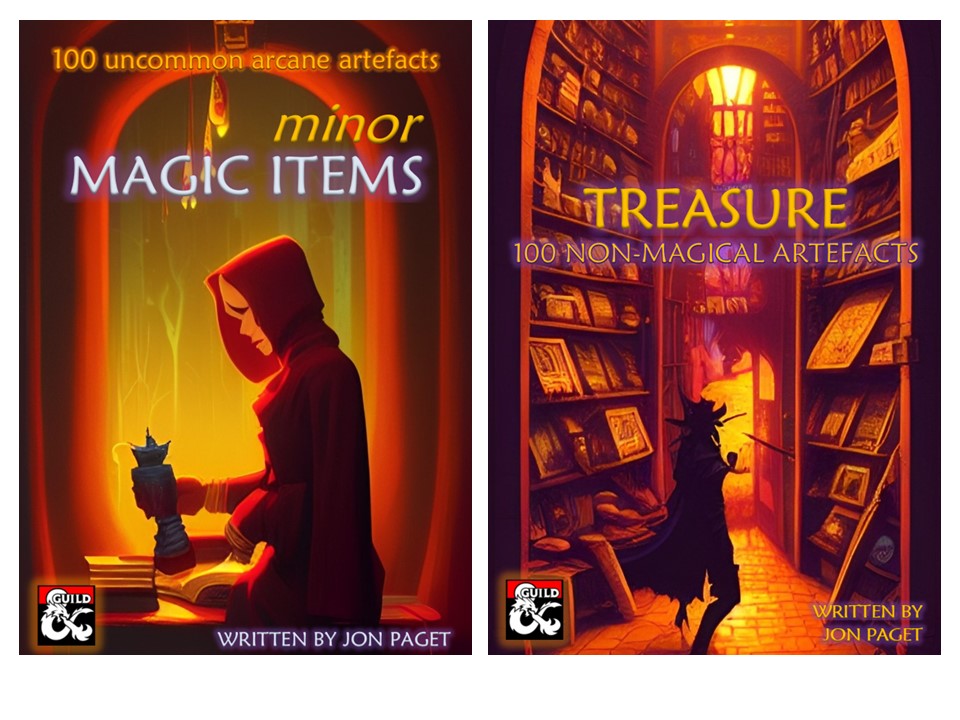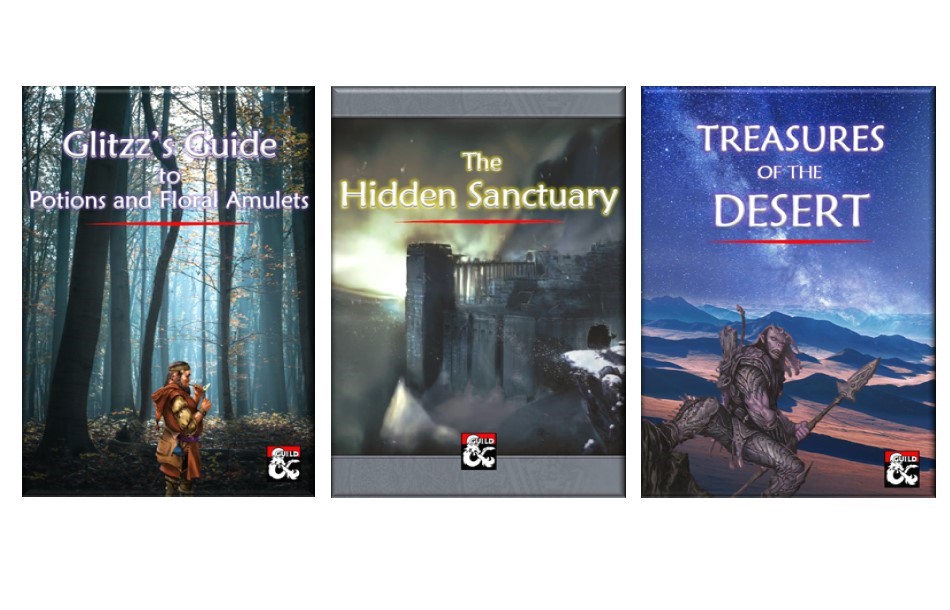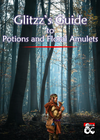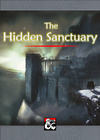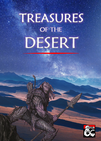Each module in the Danger Series didn’t just come with five adventures, it also came with twenty minor magic items and twenty non-magical treasures, which the DM could add to any adventure as they saw fit.
Now that I have published five separate parts in the Dangers series I have 200 magical and non-magical items, so it felt like the perfect time to focus on these treasured items and give them the spotlight, and I am delighted to have published a separate module for each! Within these products I wanted to add further instructive and descriptive content, as well as tables that order the objects alphabetically and by category. Most importantly, I created a table that ranks the magic items by power, and the non-magical items by value. This means that a player can get that sense of excitement when rolling a d100.
Finally, I was able to do what the one-pager adventures didn’t allow, illustrations. It was fantastic fun finding and choosing graphics to complement the items. It gives the modules much more flavour. The cover and most of the item art come from digital AI sources. I know this is a contentious topic, but as a writer and hobbyist I feel it is my best and most viable option at the moment.
Minor Magic Items is very specific, as I know there are many powerful items already out there. This isn’t what this module is about. The idea in adding additional items to the Dangers Series was always to create items that were unique, strange and useful rather than game breaking. Each items still needs the player to use their ingenuity and cunning.
Treasures: 100 Non-Magical Items aims to add more flavour to the trinkets and jewellery that players find. Rather then depending on the DMs Guidebook and avoiding finding the same purse of gp and ammo on each enemy, there are plenty of useful items here, that are interesting in appearance, application or value.
Above all, these modules are another useful item in the DM’s toolkit. If you include these 200 items, I hope you enjoy sprinkling them into your games!
